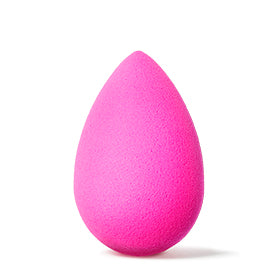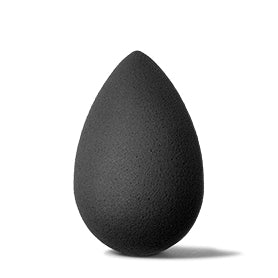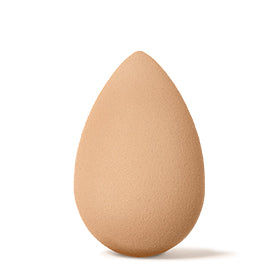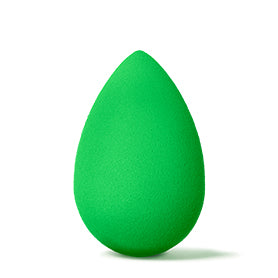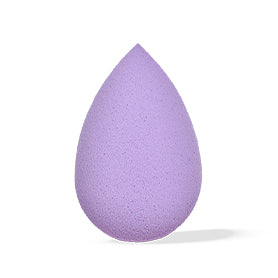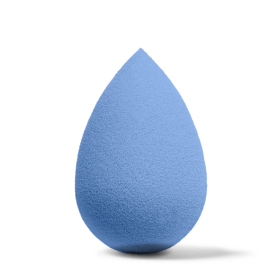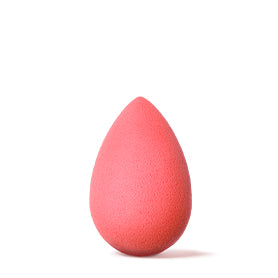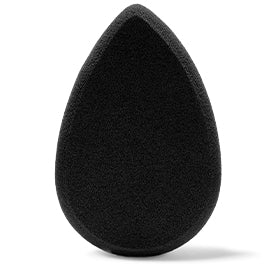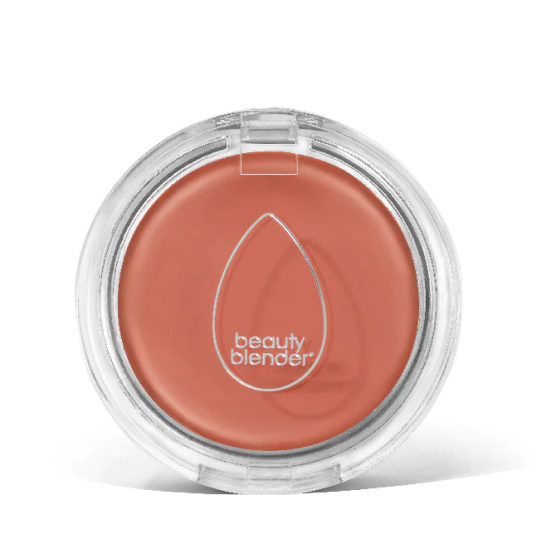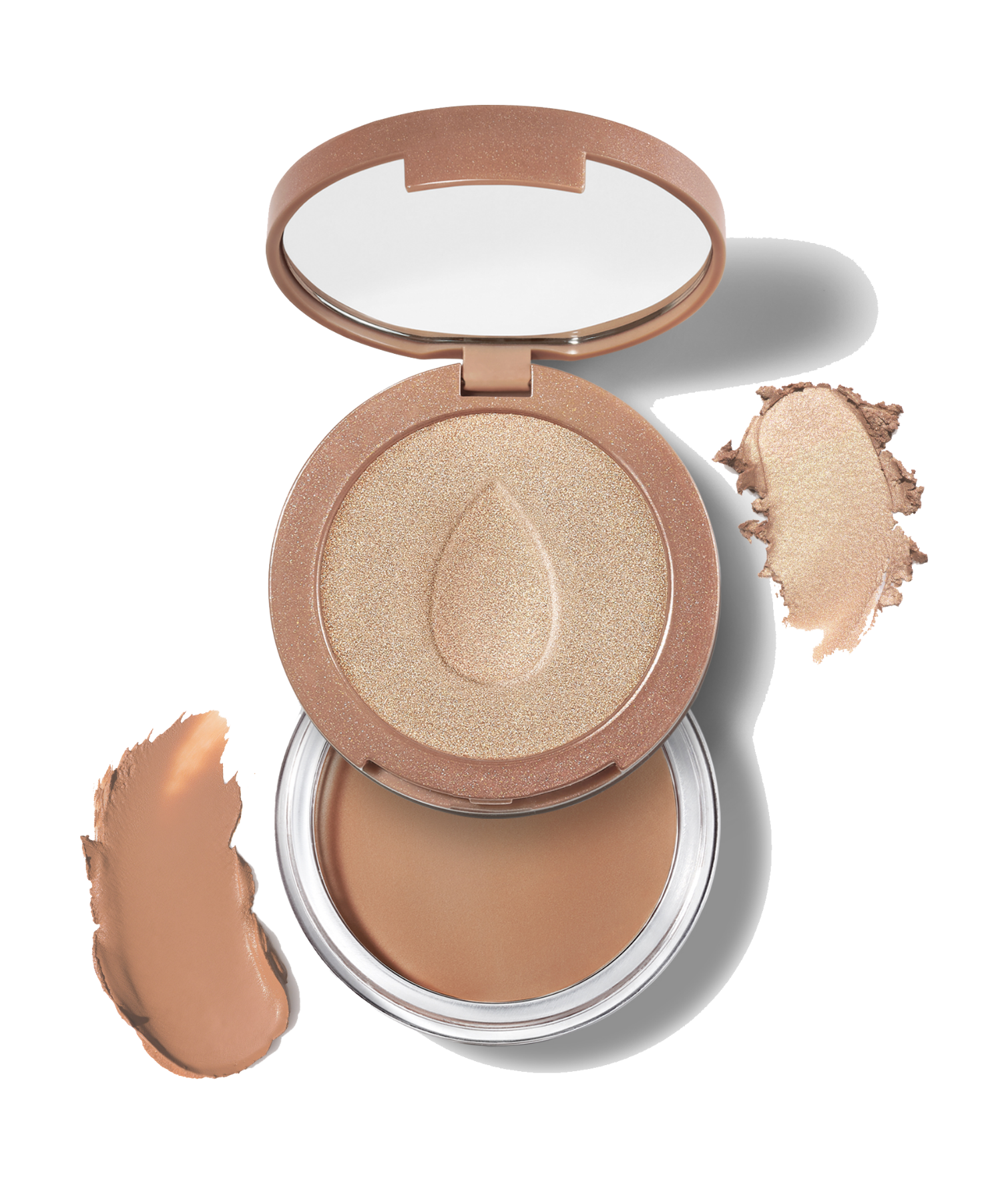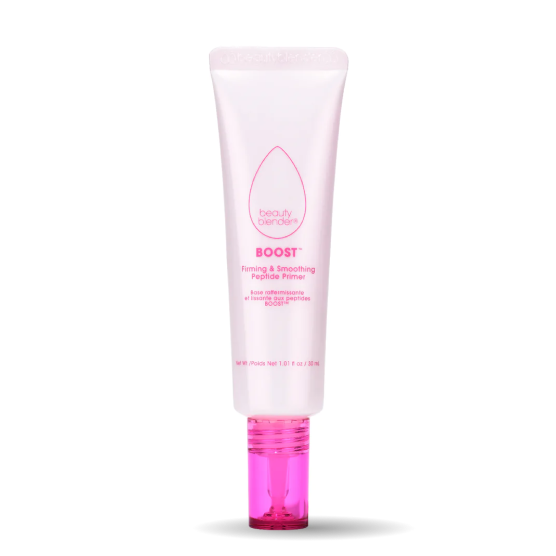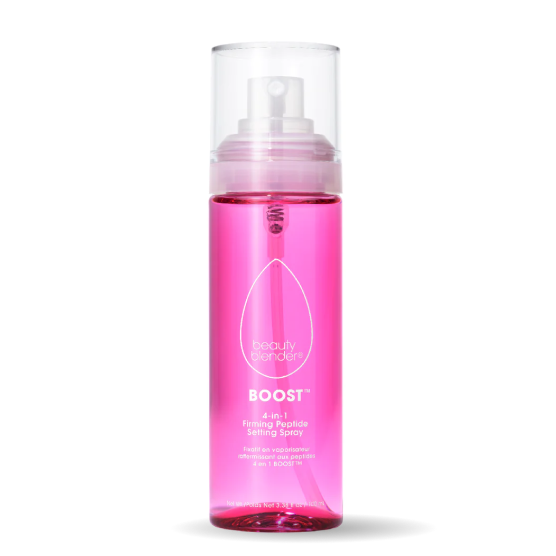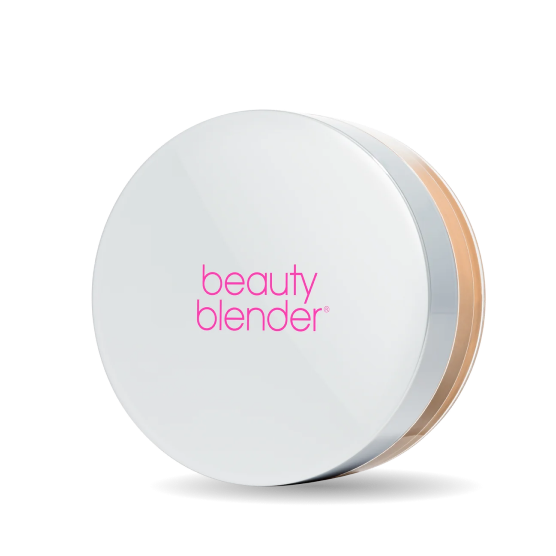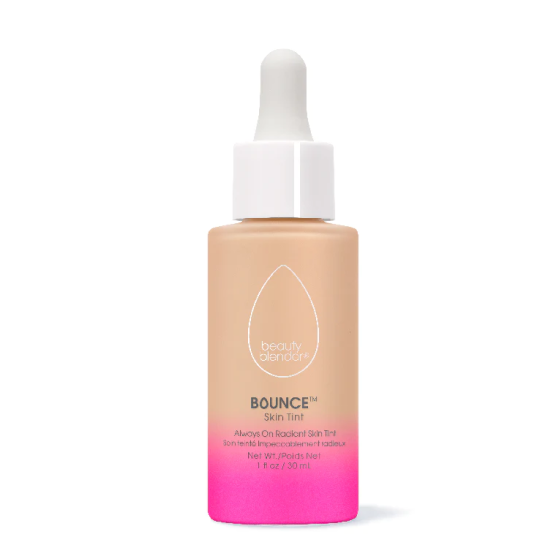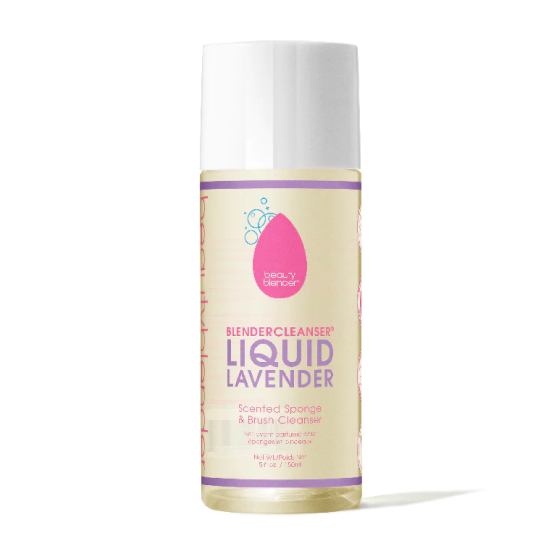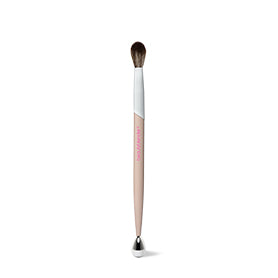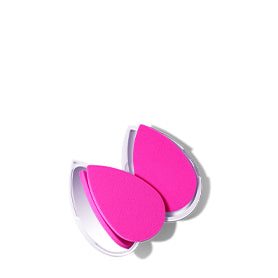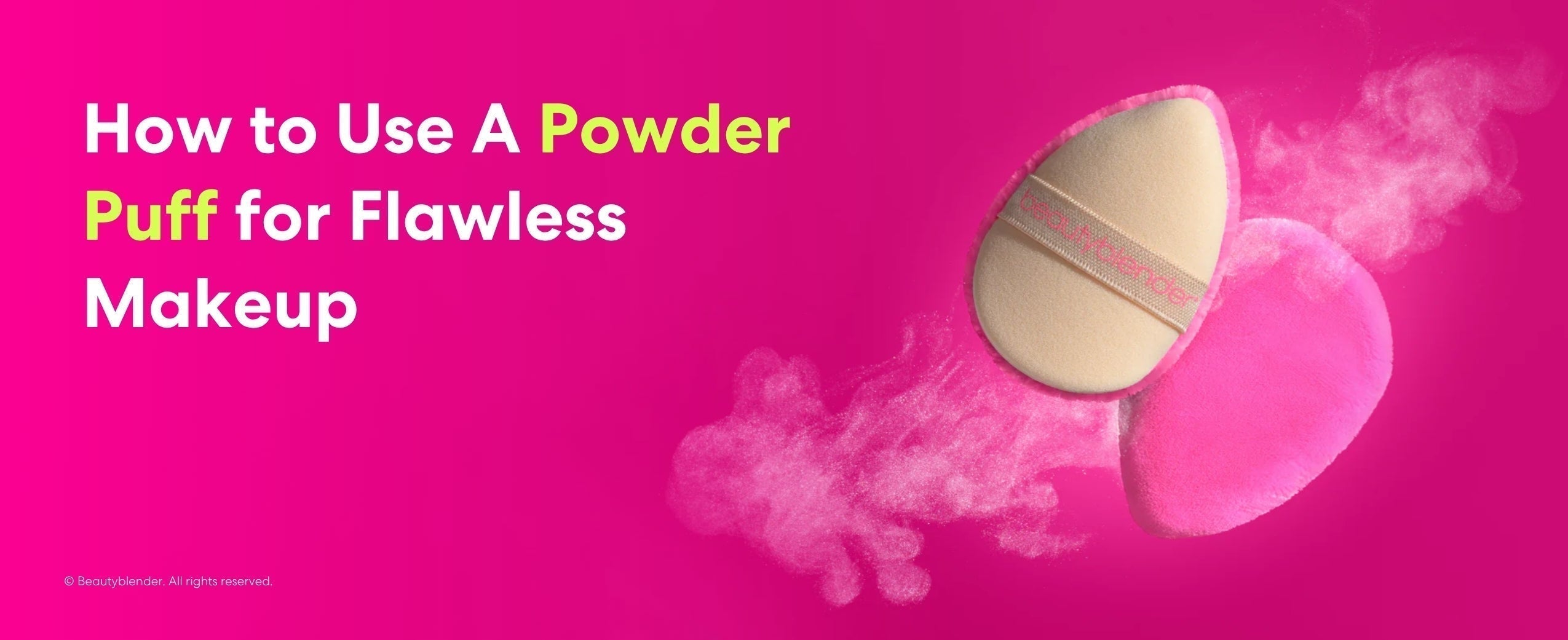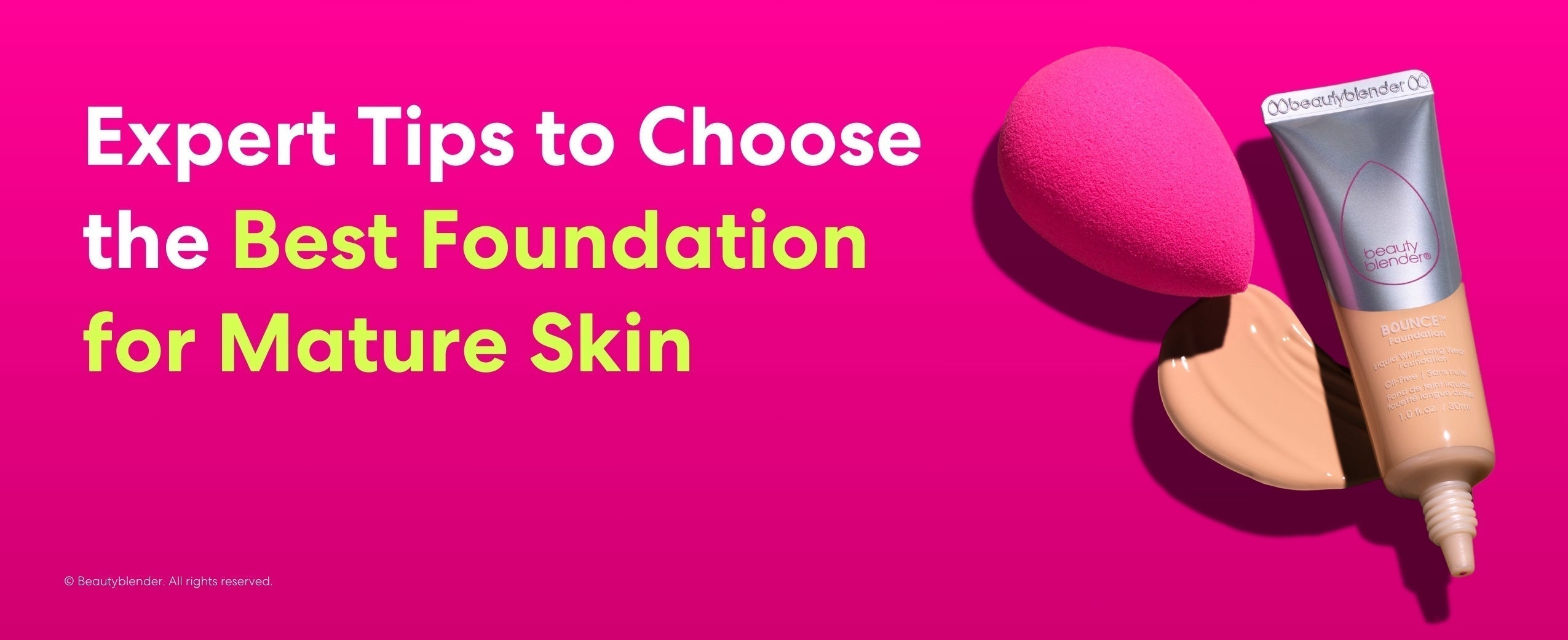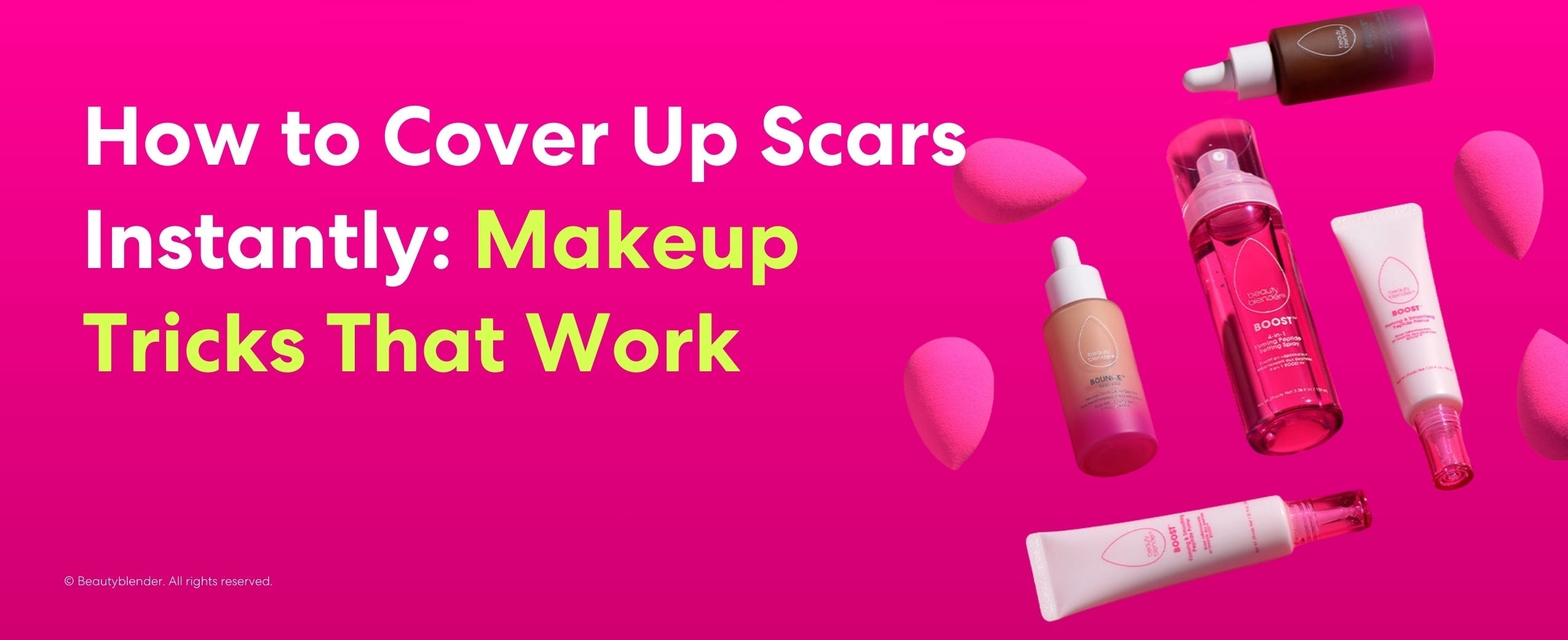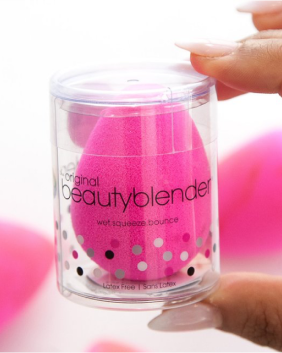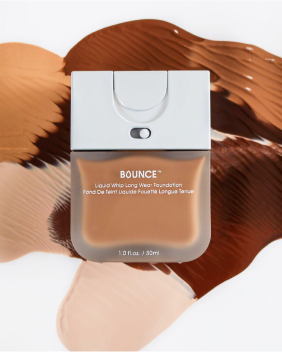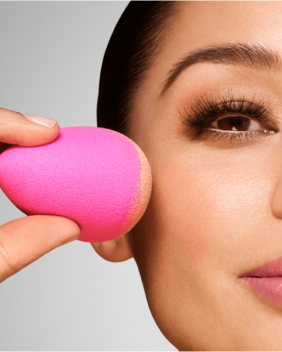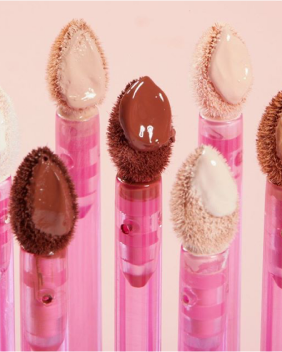What is My Undertone? How to Find Your Skin Undertone
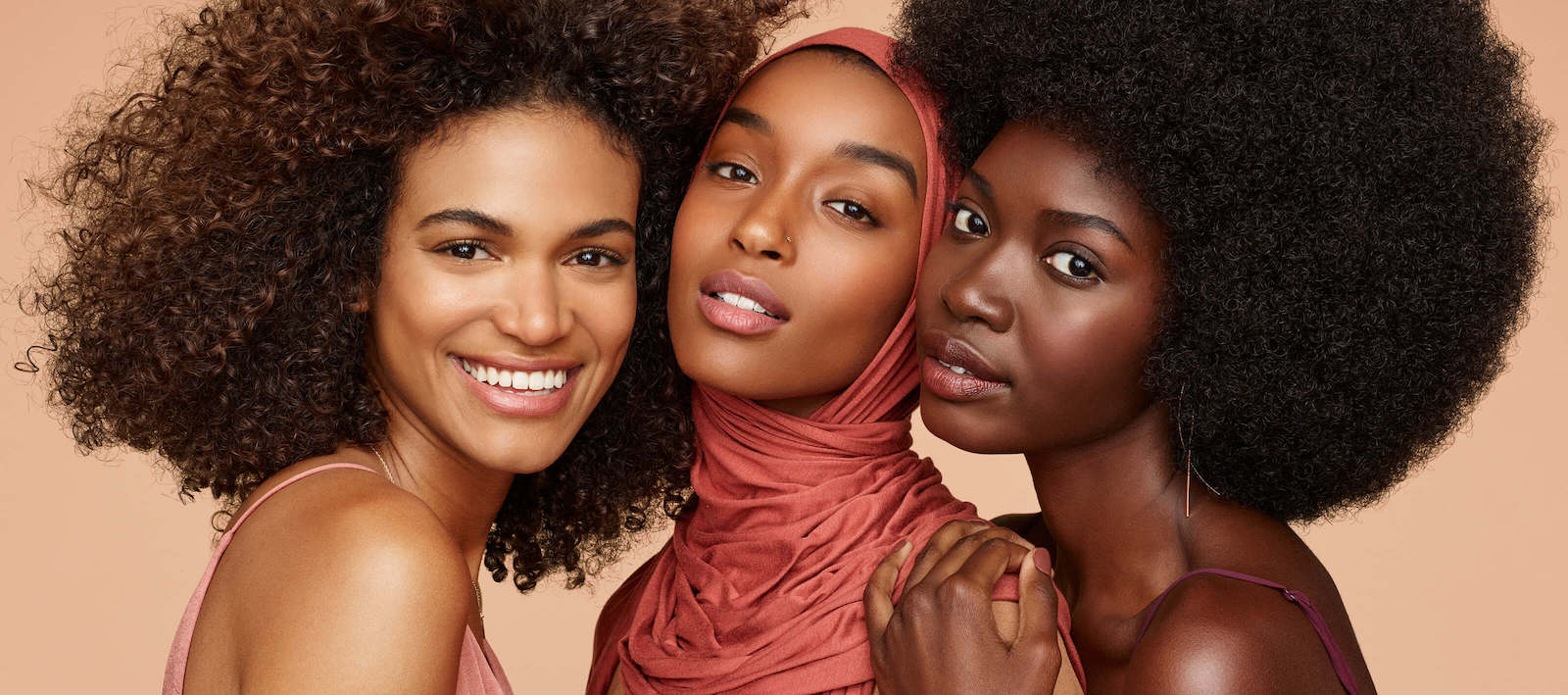
What is my undertone?" If you’ve ever asked this question, you’re not alone! Your skin undertone plays a major role in how makeup looks on you. Whether you have cool undertone skin, warm, or neutral, knowing how to find my undertone is key to choosing the right foundation, blush, and lip shades. Let’s dive into understanding your undertone so you can enhance your natural beauty effortlessly!
Here’s everything you need to know about how to find your skin undertone. Let’s get into that shade!
Difference between skin tone and skin undertone?
If you don't know the difference between your skin tone and undertone, you’re not alone! While skin tone is the visible color of your skin - like light, medium, or dark - your skin undertone is the subtle color beneath the surface: cool, warm, or neutral.
Unlike your skin tone, which can vary, your skin undertone remains the same year-round. Understanding what is my undertone can help you choose makeup that looks natural and enhances your beauty. Whether you have cool undertone skin or another type, finding the right shades will give you a flawless finish. Understanding your skin undertones can help you pick products that enhance your natural beauty and give you a seamless, radiant finish.
What are the different types of skin undertones?
When it comes to makeup, knowing how to find your undertone can be a total game-changer! Here’s a quick guide to help you understand the three main types of skin undertones—and find your celeb match!
Check out our Skin Tone Chart below for a quick and easy way to identify your undertone and find your perfect makeup match.

Warm undertone skin
Warm undertones have traces of gold and red, giving them a radiant glow. If you tan easily and rarely burn, you likely have warm undertone skin. Celebrities with warm undertones include Beyoncé, Lucy Liu, and JLo, who all shine in warm colors like bronze, gold, and coral.
What Colors Look Good on Warm Undertones?
Warm undertones are beautifully complemented by earthy, golden, and vibrant hues that enhance their natural glow. Colors like mustard yellow, burnt orange, terracotta, coral, olive green, and warm browns are perfect for clothing and makeup. Jewel tones like ruby red, emerald green, and rich gold also look stunning.
For makeup, eyeshadows with golden, bronze, or copper tones bring out the warmth in your skin, while lipsticks in peachy, coral, or brick-red shades provide a flattering pop of color. Bronzer is also a must-have for warm undertones, as its golden and sun-kissed hues perfectly accentuate your skin's natural radiance.
What Color Blush is Best for Warm Undertones?
For warm undertones, blushes in shades of peach, coral, apricot, and warm rose work best. These hues mimic the natural warmth of your skin and create a radiant, sun-kissed effect. Avoid overly cool or pink-toned blushes, as they can clash with your undertone. Instead, opt for shades with golden or orange undertones for a natural and healthy-looking flush.
For warm undertone skin, we love this buildable cream blush in playful peach that can be used on both cheeks and lips for a look that pulls together nicely.
What Should I Look for in a Warm Undertone Foundation?
When selecting a foundation for warm undertones, look for shades with descriptors like "golden," "honey," "beige," "caramel," or "warm." These foundations typically have yellow or golden undertones that match your skin's natural warmth. To avoid a mismatched base, steer clear of foundations labeled as "cool" or "neutral" unless explicitly balanced for warm undertones.
Our full-coverage foundation comes in 39 shades, offering a wide range of warm undertone shades. If you currently have a foundation that matches your skin undertone perfectly, you can use our Foundation Shade Finder tool by clicking "Find My Shade" on our foundation page.
Neutral undertone skin
You may be wondering what are neutral undertones? Neutral undertones have a balanced mix of cool and warm tones. Skin with neutral undertones can get darker in the sun, but might burn occasionally. Celebrities that have neutral undertones include Kerry Washington and Sandra Bullock, who can rock a wide range of shades beautifully.
How to Tell if You Have Neutral Undertones
If you have neutral undertones, your skin’s undertone is a balance of both warm (yellow or golden) and cool (pink or blue) tones. Here are some ways to determine if you fall into this category:
- Vein Test: Look at your wrists. If your veins appear to be a mix of green and blue, you likely have neutral undertones.
- Jewelry Test: Both gold and silver jewelry complement your skin equally well.
- Clothing Test: You look great in almost any color, from warm hues like coral to cool shades like lavender.
- Sun Reaction: If you tan easily without burning but also have some redness, this could be a sign of neutral undertones.
What Colors Look Good on Neutral Undertones?
Neutral undertones are versatile, meaning you can pull off a wide variety of colors! Both warm tones like peach, coral, and earthy browns and cool tones like blue, lavender, and pink will suit you. Jewel tones such as emerald green and deep sapphire look stunning as well. Opt for balanced, muted shades if you prefer subtlety, or play with brighter colors that balance warm and cool tones, like teal or raspberry.
What Color Blush is Best for Neutral Undertones?
For neutral undertones, the best blush colors are those that strike a balance between warm and cool. Shades like soft rose, mauve, peachy-pink, and warm apricot work beautifully. Avoid overly stark cool tones or very orange shades, as they can overpower your natural balance.
Neutral undertones shine with subtle blush colors that add a natural flush without clashing with your skin’s versatility. That's why we have chosen Beautyblender's "Flirty Rose" as the best cream blush for neutral undertones.
Cool undertone Skin
Cool undertones show hints of pink and blue, creating a softer, cool complexion. Cool undertone skin tends to burn more easily, so shades like silver, berry, and jewel tones complement best. Celebs with cool undertones include Alex Wek, Anne Hathaway, and Adele.
How to Tell if You Have Cool Undertones
Cool undertones mean your skin has hints of blue, pink, or red. To determine if you have cool undertones, consider these factors:
- Vein Test: Check the veins on your wrist. If they appear blue or purplish, you likely have cool undertones.
- Jewelry Test: Silver jewelry tends to complement your skin better than gold.
- Clothing Test: Cool shades like icy blues, lavender, and soft pinks look amazing on you.
- Sun Reaction: If your skin burns easily or turns pink before tanning, this may indicate cool undertones.
What Colors Look Good on Cool Undertones?
Cool undertones look their best in colors with blue, pink, or violet hues. Think icy blues, soft lavenders, rosy pinks, and jewel tones like sapphire, emerald, and ruby. Neutral colors such as gray, navy, and crisp white also flatter cool undertones beautifully. Avoid earthy tones like mustard or orange, which can clash with the natural coolness of your skin.
What Color Blush is Best for Cool Undertones?
Blushes in shades of cool pink, berry, soft rose, or mauve work wonderfully for cool undertones. These shades naturally mimic the cool pink or reddish tones in your complexion, creating a harmonious and flattering flush. Avoid overly warm or peachy blushes, as they may look unnatural on cool undertones. Instead, focus on hues that enhance your skin’s natural balance. Something like this pink blush would compliment cool undertones perfectly.
Here’s a visual that may give you an idea of where you’d expect to fall on the spectrum and help you find makeup that enhances your undertone!

Why does knowing your undertone matter?
Knowing your skin undertones is essential for finding makeup that truly complements your natural beauty. Unlike skin tone, which can change with the seasons, your undertone—whether it’s cool, warm, or neutral—stays the same and plays a huge role in how colors look on your skin.
If you have warm undertone skin with hints of gold and red, shades like peach, coral, and gold bring out your glow beautifully. Meanwhile, cool undertone skin, with traces of pink and blue, looks radiant in shades like silver, berry, and jewel tones.
Choosing products that match your undertone means your makeup will blend seamlessly, enhancing your complexion rather than looking “off” or dull. From foundation to lipstick, understanding your undertone ensures every shade flatters you naturally, giving you that fresh, radiant look every time.
Skin undertone facts
As you now understand "what's skin undertone," the difference between skin tone and skin undertone, and the types of skin undertones, here are some more interesting facts about skin undertones to help you level up your beauty game!
Skin undertones affect more than just foundation
Your undertone influences how all colors—lipstick, blush, eyeshadow, and even clothes—look on you. The right colors enhance your natural glow, while mismatched ones can make you look washed out.
Testing your undertone is easy!
Ever heard of the vein test? Look at the veins on your wrist: if they appear blue or purple, you’re likely cool-toned. If they look greenish, you're warm-toned. If it’s a mix, you’re probably neutral.
General undertone rule: eye and skin color can offer clues
- Deeper skin tones and eye colors tend to have warmer undertones, complementing golden or peach shades.
- Fair skin and light eyes are often associated with neutral or cool undertones, meaning pinks or blues look especially natural.
Your undertone is unique and stays consistent
Unlike skin tone, which can shift with sun exposure or skincare, your undertone remains the same. Knowing it is like having a guide for flawless color choices, season after season.
Natural light is key for accurate undertone identification
To get a true read on your undertone, always check it in natural light. Indoor lighting can throw off colors, making it harder to identify your undertone correctly.
Now that you know what is my undertone, you can confidently choose makeup that enhances your natural beauty. By keeping these skin undertone facts in mind, you’re ready to make makeup and color choices that enhance your natural beauty. Embrace your unique undertone and let it lead you to glow-enhancing beauty every day!
Skin undertone tips: how can I tell what undertones I have?
If you’ve ever asked yourself, “What is my undertone?”, you’re not alone. Knowing how to tell your undertone can make a big difference in finding makeup shades that flatter your natural beauty. So, here are some tried-and-true tips to answer “What’s my undertone?” and become your own undertone finder.
Vein test
Start by examining your wrist veins under natural light—this is one of the easiest ways to determine your undertone.
- Green veins? You likely have warm undertones.
- Blue or purple veins? You’re probably cool-toned.
- A mix of both colors? You’re most likely neutral.
Jewelry test
Put on a piece of gold jewelry and a piece of silver jewelry and ask yourself, “Which looks better on me?”
- If gold jewelry makes you glow, your undertone is probably warm.
- If silver jewelry looks best, you likely have cool undertones.
- If both look equally flattering, you’re likely neutral.
The white T-shirt trick
Put on a plain white T-shirt, step outside into natural light, and look at your face.
- If your face appears yellowish, or if you feel off-white or beige suits you better, you have warm undertones.
- If your skin looks rosy or pink, your undertone is cool.
- If you look equally good in both white and cream shades, you likely have neutral undertones.
General undertone clues
Still wondering, “How to know your undertone?” Check out these general guidelines:
- Deeper skin tones often have warm undertones.
- Fair skin with light eyes often leans towards cool or neutral undertones.
By using these tips and learning how to tell your undertone, you can answer, “What is my skin undertone?” and choose shades that let your natural glow shine. The next time you’re in doubt, pull out this quick undertone finder guide and find your perfect match!
Skin undertone tricks
Not big on DIY? No worries—we’ve got you covered! If you haven’t yet tried our new Shade Finder, now’s the perfect time to give it a spin. This easy-to-use tool will not only help you discover what is my skin undertone but also guide you toward your perfect BOUNCE foundation match. And the best part? You can do it all in less than two minutes!
Bonus Trick: Try Both Undertone Options
Still wondering “how to know your undertone?” Here’s a quick tip: If you’re stuck between warm and cool undertones, try a foundation shade from each category that matches your skin tone. The shade that blends seamlessly and “disappears” into your skin is your perfect match—your one true pairing!
Using our Shade Finder or trying a couple of shades side-by-side will make finding your perfect undertone simple and fun. With these tricks, you’ll be on your way to a flawless, natural look every time!

How to find your undertone: top questions explained
What is a skin undertone?
A skin undertone is the subtle color beneath the surface of your skin that affects how makeup shades look on you. Unlike your skin tone, which can change due to sun exposure or skincare products, your undertone stays the same all year long. Identifying your undertone, whether warm, cool, or neutral, is key to choosing foundation, blush, and lipstick that enhance your natural beauty and blend seamlessly with your complexion.
How do I know my skin undertone?
To find your skin undertone, try the vein test under natural light. Green veins suggest a warm undertone, blue or purple veins indicate a cool undertone, and a mix of both means you're likely neutral. You can also try the jewelry test - gold looks better on warm undertones, silver suits cool undertones. The white T-shirt trick is another easy way to test: warm undertones look better in off-white or beige, while cool undertones glow in bright white.
What are the different types of skin undertones?
There are three main skin undertones: warm undertones (yellow, peachy, or golden), cool undertones (pink, red, or bluish), and neutral undertones (a balance of warm and cool). Each undertone affects how makeup shades appear on your skin, which is why matching your undertone is essential for a natural, radiant makeup look.
What colors look best on warm undertones?
Warm undertones look stunning in colors that mirror their natural warmth. Think earthy tones like terracotta, mustard, olive green, coral, and golden bronze.
What foundation is best for warm undertones?
The best foundation for warm undertone skin will have yellow, golden, or peach hues. Look for descriptions like “golden,” “warm beige,” “honey,” or “caramel” in your shade match. Avoid foundations labeled as “cool” or “neutral” unless they’re clearly balanced for warm skin tones.
What colors look good on neutral undertones?
If you have neutral undertones, lucky you, most colors look great on your skin. You can pull off both warm and cool shades. Try soft rose, mauve, peachy-pinks, emerald green, and muted tones like taupe or dusty blue. In makeup, you're safe to explore across the spectrum.
How can I tell if I have cool undertones?
If your veins appear blue or purple, silver jewelry looks best on you, and your skin burns more easily than it tans, you likely have a cool undertone. You may also notice a pink or rosy hue to your skin, especially in natural light.
What’s the difference between skin tone and skin undertone?
Your skin tone refers to the surface color of your skin: light, medium, tan, deep, while your skin undertone is the constant shade beneath the surface: cool, warm, or neutral. While your tone may change seasonally, your undertone stays the same and influences which makeup shades look natural on you.
Can my skin undertone change over time?
No, your undertone doesn’t change. While your skin tone can fluctuate with sun exposure, skincare, or aging, your undertone remains consistent throughout your life. That’s why it’s such a valuable guide when choosing makeup.
What’s the easiest way to find my undertone at home?
Use the vein test, jewelry test, and white T-shirt trick under natural light. You can also compare two foundation shades (one warm, one cool) and see which blends seamlessly into your skin - this is your perfect undertone match.
Can I have more than one undertone?
Some people may appear to have a mix of undertones, especially in areas where skin is thinner or more exposed. However, most people have one dominant undertone. If you’re truly balanced between warm and cool, you likely have a neutral undertone.
Do different parts of my face have different undertones?
Your face can have slightly different hues in certain areas, especially if you have redness, pigmentation, or sun exposure. But your overall undertone stays consistent - use your jawline as a guide when testing products.
How does knowing my undertone help with makeup?
Understanding your skin undertone ensures that your foundation, blush, eyeshadow, and lipstick complement your complexion, creating a natural, radiant finish. When makeup matches your undertone, it enhances your glow and looks seamless.
Can the wrong undertone in makeup make me look washed out?
Yes. Choosing a foundation or blush that doesn’t match your undertone can make your skin look dull, grayish, or too orange. Matching your undertone ensures your makeup looks natural and flattering, not forced or artificial.
